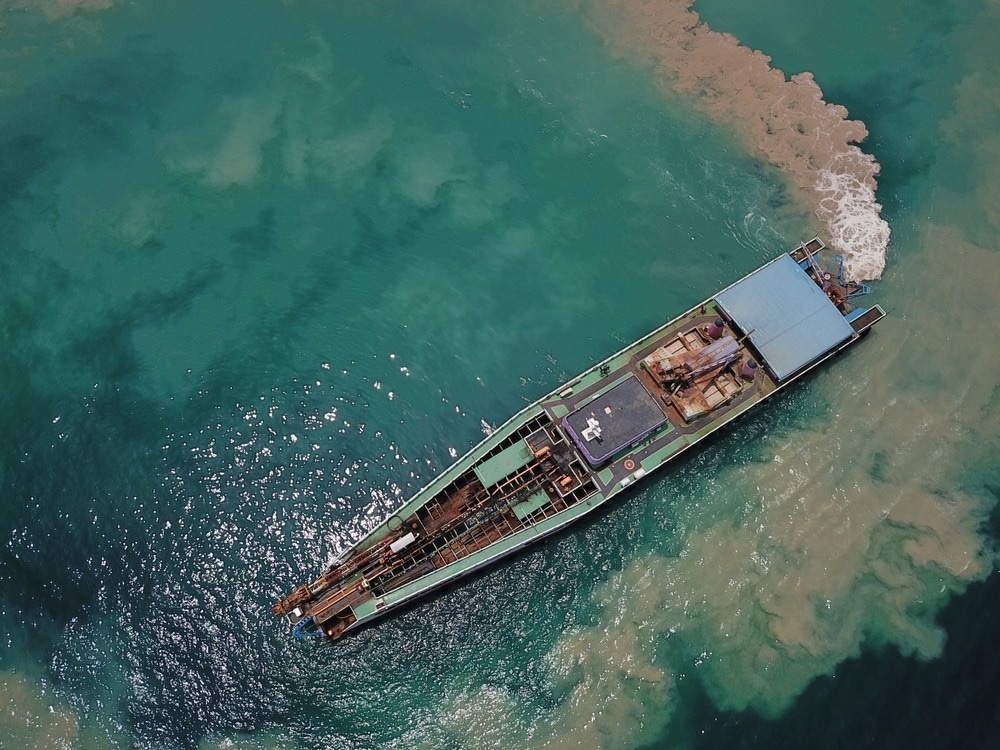The dredging industry is demonstrating significant interest in cutting-edge technology and its potential to enhance performance through increased efficiency and enhanced data collection capabilities.

Image Credit: Aresta Arditya/Shutterstock.com
The desire for new and better technology is partly driven by increasing demands being placed on the dredging industry. Many projects require much longer pumping distances than in the past. There are also tighter controls and monitoring requirements. Dredges must also be more accurate than ever to meet modern expectations.
There are many advantages to adopting new technology, but these advances also come with their challenges. Dredging workers of today require a much more advanced skill set than previous generations. To remain productive, today's workers must keep up with PLC controls and positioning programs.
Sometimes, new technology can fail and create significant downtime, especially when an operation depends entirely on it. To this end, new technical systems should have backups in place and a support system capable of addressing issues as quickly as possible. This typically means taking on additional costs.
Increased Pressure to Dredge Deeper
The Panama Canal expansion in 2016 unlocked a critical bottleneck for post-Panamax ships, and the knock-on effect is increased pressure to dredge deeper in port projects.
As a result, many dredging contractors are updating their fleets and investing in new equipment. These ongoing investments bode well for the dredging industry but also intensify competition with the expectation of stronger market demand.
While there is pressure to deepen ports, there is far less pressure to widen them. Many countries have made legislative commitments to protect their coastlines, which can prolong project timelines.
The Rise of Environmental Dredging
Environmental concerns continue to affect the entire dredging industry in many different ways. If dredging operations are taking place in or near a habitat for an endangered species, for example, it can restrict the area for operations, limit dredging windows, and increase monitoring requirements.
Most notably, environmental concerns are driving investment in new equipment capabilities. For example, some companies are investing in dredge designs built to minimize over-dredging and decrease the amount of dredged material that must be handled and possibly treated.
Dredging operators are also looking closer at equipment that reduces energy consumption. This investment in more environmentally friendly dredging equipment is happening alongside demands for greater productivity.
Environmental concerns go beyond solely protecting the surrounding ecosystem. Dredging operations can generate significant noise pollution, and because many projects take place near communities, dredging operators are focusing more on sound attenuation.
An increasing number of dredging projects are focused on environmental remediation. One of the key challenges in this area relates to pumping distances. There are increasing requirements for discharge distances since widespread areas of contamination are increasingly being dredged. Environmental dredging may also require very remote processing stations to avoid processing contaminated materials alongside communities. This increases the need for equipment portability and research into potential safe uses for dredged material.
A Push for More Training, Education, and Certifications
As manufacturers develop increasingly advanced products, they are also improving their commitment to providing comprehensive training for these innovations. Some of this training includes virtually simulated operations and hands-on field training.
The dredging industry is becoming more mature with respect to certifications. At the organizational level, certifications allow public and private entities to establish minimum requirements for employees and contractors.
At the individual level, earning certifications allows entry and mid-level professionals to distinguish themselves from their peers. As discussions around certifications evolve, the industry will likely coalesce around certain coursework most relevant to dredging operations.
Dredging contractors also push for greater knowledge as they increasingly educate their clients on the various facets of dredging operations. There has been a rising trend toward educating clients on potential environmental impacts. Contractors are also partnering with research institutions to further understand how dredging operations impact the environment.
Conclusion
Despite the daunting nature of these obstacles, the industry is flourishing and placing an escalating emphasis on sustainability, ensuring that operations are conducted in a manner that does not shift the burden of responsibility onto future generations.
Read More: Environmental Impact of Dredging: Balancing Progress and Conservation
References and Further Reading
American Maritime Voices Staff. (Retrieved 2023 November 29). New Report Shows American Dredging is Competitive and Growing. American Maritime Voices. https://dredgingcontractors.org/new-report-shows-american-dredging-is-competitive-and-growing/
Wetta, R.B., & Johnson, C.H. (2015). Dredging industry trends. In Proceedings of the Western Dredging Association and Texas A&M University Center for Dredging Studies' "Dredging Summit and Expo 2015" (pp. 523-530). https://www.westerndredging.org/phocadownload/Proceedings/2015/7a-5%20Wetta%20Johnson%20WEDA%20TAMU%20Manuscript%20-%20Dredging%20Industry%20Trends%20rer.pdf
Alcorn, A., Hayes, D. Randall, R. The Need for a Dredging Certification Program. In Proceedings of the Western Dredging Association and Texas A&M University Center for Dredging Studies' "Dredging Summit and Expo 2015" (pp. 519-522). https://www.westerndredging.org/phocadownload/Proceedings/2015/7a-4%20Alcorn%20et%20al%20WEDA%20TAMU%202015%20Certification%20paper-5-5-2015%20rer.pdf
Disclaimer: The views expressed here are those of the author expressed in their private capacity and do not necessarily represent the views of AZoM.com Limited T/A AZoNetwork the owner and operator of this website. This disclaimer forms part of the Terms and conditions of use of this website.